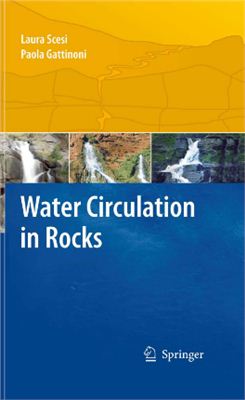Springer, 2009. - 165 pp. ISBN-9048124166.
Understanding water circulation in rocks represents a very important element to solving many of the problems linked with civil, environmental and mining engineering. This book offers a synthesis of the actual knowledge about the fluid flow in rocks:
- from the medium characterization and the structural geological survey to the generation of stereonets;
- the evaluation of the hydrogeological parameters using either deterministic or probabilistic methodologies;
- the evaluation of the preferential flow direction considering the change of the hydrogeological structures;
- the methods and models used to simulate the flows.
Three case studies are provided; water circulation and slope instability, hydrogeological risk linked with tunnelling, and hydrogeological risk linked with road construction.
Understanding water circulation in rocks represents a very important element to solving many of the problems linked with civil, environmental and mining engineering. This book offers a synthesis of the actual knowledge about the fluid flow in rocks:
- from the medium characterization and the structural geological survey to the generation of stereonets;
- the evaluation of the hydrogeological parameters using either deterministic or probabilistic methodologies;
- the evaluation of the preferential flow direction considering the change of the hydrogeological structures;
- the methods and models used to simulate the flows.
Three case studies are provided; water circulation and slope instability, hydrogeological risk linked with tunnelling, and hydrogeological risk linked with road construction.

